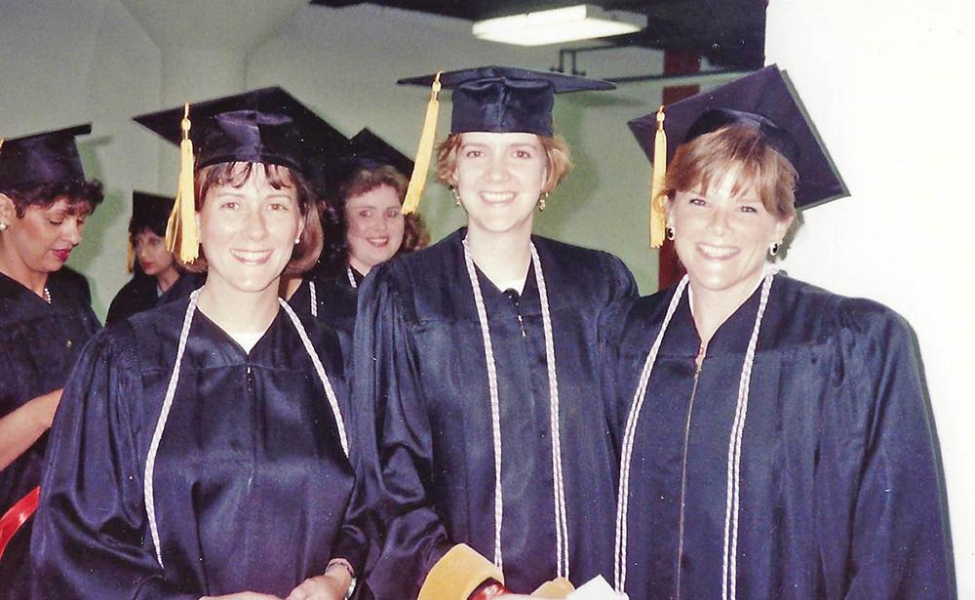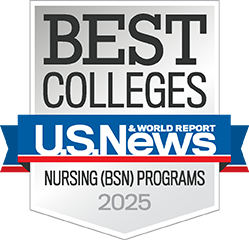Committed to caring for older adults
Gerontological nursing



The decades-long tradition of innovations at Cizik School of Nursing in caring for older adults took root in the 1980s and continues to grow along with our aging population’s health care needs.
Much of the school’s advancement in this vital area can be traced to the formation of the Center on Aging in 1987. Linda Kaeser, PhD, RN, a noted expert in gerontological nursing and health care policy, came to UTHealth Houston from Portland State University in Oregon to lead the center, which fostered interdisciplinary education, community involvement, research, and advocacy to improve the quality of life of older people and their families.
Over the years, the center attracted substantial funding from government and philanthropic organizations as well as leaders in gerontological education, practice, and research. Among the first supporters was the Isla Carroll Turner Trust, which endowed a chair in gerontological nursing held by Kaeser.
Professor Vaunette Fay, PhD, FNP, GNP, had been at the school for several years and was tapped to help develop a geriatric nurse practitioner (GNP) program.
“We graduated our first class of GNPs in 1988,” said Fay, who served as track director of gerontology for many years. The school’s GNP program eventually became one of the nation’s largest and was highly ranked by U.S. News & World Report. Over the next two decades, Fay received a series of substantial grants from sources including the John A. Hartford Foundation and the Health Resources and Services Administration for gerontology education aimed at students, faculty, and practicing nurses.
“We really grew geriatrics within the school and also within the medical community,” Fay said.
The center’s early goals extended beyond nursing education to touch many aspects of elder care in the community. Ellen MacDonald, MSN, RN, joined the faculty in 1988 and called upon her administrative experience at a nursing home in The Woodlands to develop and direct a master’s level long-term care administration program. She would also serve as program manager of the Long-Term Care Ombudsman program, a federally and state-funded program administered through the Harris County Area Agency on Aging. Having both types of programs run by nursing schools remains quite unusual.
Subsequent leaders of the ombudsman program were Diane Persson, PhD, and Carmen Castro, DrPH, who is now administration manager for the Harris County Area Agency on Aging. Today, Chief Ombudsman Greg Shelley directs seven staff and 83 volunteer ombudsmen.
From the beginning, the center’s strong commitment to multidisciplinary education stemmed from the belief that older persons with complex issues are best served by teams of professionals. In the 1990s, Kaeser, MacDonald, and Fay developed and taught the first multidisciplinary aging course for nursing and public health students from UTHealth Houston as well as social work students from the University of Houston.
With the Center on Aging’s educational and community missions well established, Kaeser turned her attention to developing a robust research program. Professor Emerita Sharon Ostwald, PhD, RN, was recruited from the University of Minnesota in 1994 as the first associate director of aging research and first Theodore J. and Mary E. Trumble Endowed Professor in Aging Research, a position funded with the help of GNP graduate Mary Trumble. The center’s collaborative focus appealed to Ostwald, who was the principal investigator of NIH-funded interdisciplinary research studies of persons with dementia and stroke and their families.
“When I came in the ’90s, it was a very welcoming environment,” Ostwald said. “I felt comfortable forging relationships in public health, medicine, and the institutions within the Texas Medical Center,” she said.
Ostwald became the center’s director in 1996. She held adjunct appointments in UTHealth Houston’s schools of medicine and public health and was the Isla Carroll Turner Chair in Gerontological Nursing from Kaeser’s retirement in 1998 until her own retirement in 2012. During her 18 years with the Center on Aging, its research programs received substantial funding from federal, organizational, and private sources.
The center’s reputation and resources helped to recruit Nancy Bergstrom, PhD, RN, FAAN, from the University of Nebraska in 2000 to be its associate director of aging research, holding the Trumble Professorship. Bergstrom had worked with Barbara Braden, PhD, during years of testing the Braden Scale for Predicting Pressure Ulcer Risk (© B. Braden & N. Bergstrom, 1988), chaired two federal interdisciplinary panels creating the first guidelines on the topic, and obtained federal funding for a number of multisite studies. This work resulted in her induction to the Sigma Theta Tau International Honor Society’s International Nurse Researcher Hall of Fame in 2010.
“The Center on Aging was a really interesting place with a number of ventures that were vastly different, all focused on aging from an interdisciplinary perspective,” said Bergstrom, who was impressed by the diversity of the center, the school, and the city. She succeeded Ostwald as the Center on Aging’s director from 2004 until her retirement in 2015.
After renowned gerontologist Carmel Dyer, MD, joined the faculty of McGovern Medical School at UTHealth Houston in 2007, Ostwald and Dyer collaborated on several federal and philanthropically funded geriatric education projects benefitting nurses throughout the community, as well as multidisciplinary students from UTHealth Houston and other local universities. Dyer also initiated the UTHealth Houston Consortium on Aging, which quickly grew its membership to more than 200 professionals representing various health care disciplines as well as community partners.
Dyer remained a driving force in promoting comprehensive, age-appropriate care for older adults until her death in May 2021 at the age of 62. She served as keynote speaker at the “Internet of Things and Aging in Place” gathering in January 2020 that marked the grand opening of Cizik School of Nursing’s Smart Apartment. This collaborative event with Rice University kicked off seed grant opportunities in the new Smart Apartment laboratory, where researchers use sensors, monitors, robots, and other innovative devices to identify and pilot technologies that can help monitor self-management of chronic diseases and frailty and detect health and behavior changes in aging and disabled adults.
“The pandemic caused delays, but I am pleased to see the fruits of the seed grants paying off,” said Associate Dean for Research Constance Johnson, PhD, RN, FAAN. One example is the recent publication of a needs assessment related to development of a chatbot incorporating artificial intelligence to help older adults access medication information. The principal investigator is Kirk Roberts, PhD, assistant professor at UTHealth Houston School of Biomedical Informatics, with three nursing faculty members serving as co-investigators.
A second pair of Aging in Place Research Awards were awarded this year to interprofessional teams led by Seema Aggarwal, PhD, RN, AGNP-C, assistant professor and PARTNERS Research Scholar, and Carina Katigbak, PhD, RN, ANP-BC, FAH, associate professor.
"We are honored, humbled, and privileged to build on the foundation of education, practice, and research laid by our pioneering faculty as we explore new frontiers of gerontological nursing," said Dean Diane Santa Maria, DrPH, MSN, RN, FAAN.


